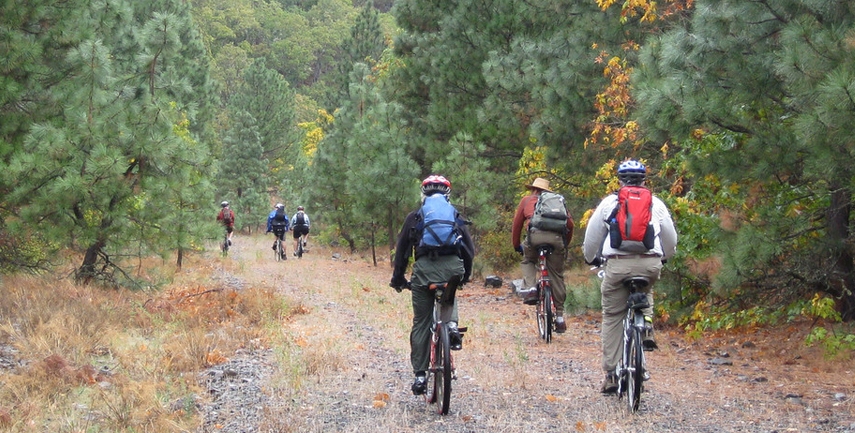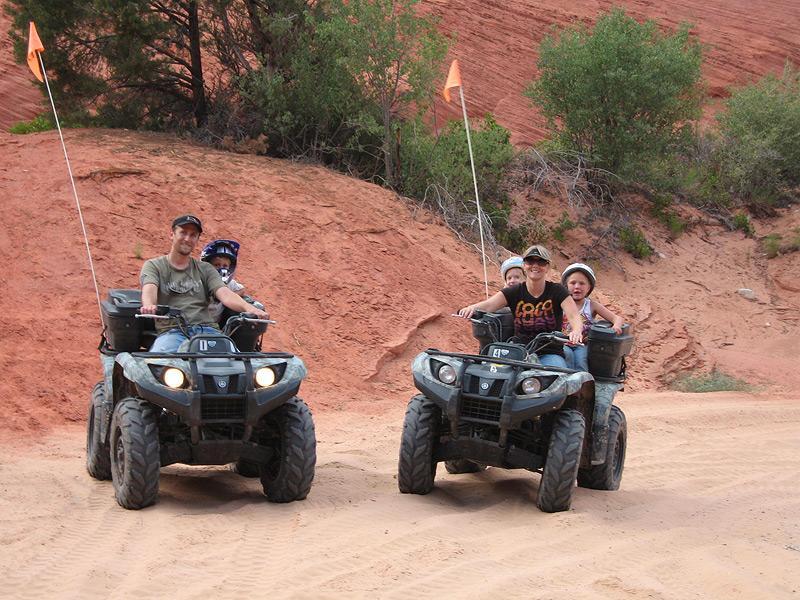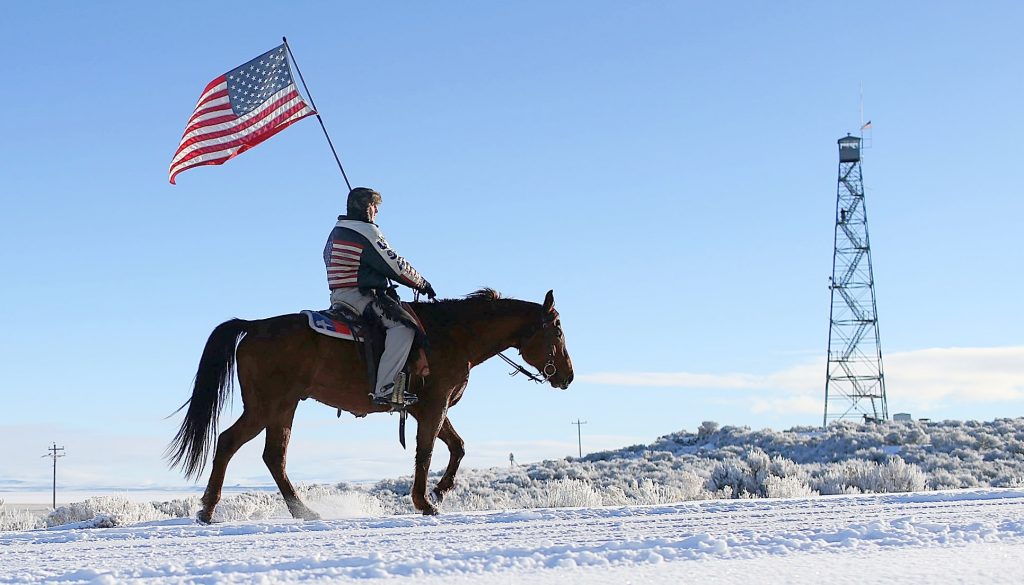The U.S. Forest Service says even though Bella Berlly of Klickitat County has a degenerative disease, she can’t use an e-bike on mountain-bike trails. She says that’s discrimination, and a Washington congresswoman is joining her fight.
After spending roughly 30 years as a mountain biker, Bella Berlly wasn’t ready to give the sport up when she was diagnosed with a degenerative muscle disease.
Unable to power a bicycle entirely on her own, the resident of White Salmon in Klickitat County found the solution in an electric pedal-assist bike.
But the U.S. Forest Service sees her bike as a motor vehicle and thus not allowed on mountain-bike trails. Instead, her bike is restricted to off-highway vehicle routes used by Jeeps, all-terrain vehicles and dirt bikes. A motor is a motor, according to the Forest Service and mountain-bike advocacy groups, and electric bikes should stay off trails designated for hikers, horses and cyclists.
Berlly says that’s discrimination. She wants the Forest Service to allow disabled people to use e-bikes on nonmotorized trails in the same way they’re allowed to use motorized wheelchairs.
In a letter to Forest Service Chief Tom Tidwell, U.S. Rep. Jaime Herrera Beutler is championing Berlly’s cause, writing: “Our National Forests are community assets, and it is troubling that individuals employed to act as stewards of those assets are limiting access by the physical disabilities community through discriminatory actions.”
No exception, for now
Electric bikes, or e-bikes, come in four different classifications, identified by the speed they can travel, how the motor is activated and other factors.
Berlly rides a Class-1 e-bike designed for mountain biking. She bought it thinking the Forest Service would see it as a regular bike. It has almost all the same parts as a traditional mountain bike, save for an enlarged crank where the motor sits and an 8-pound battery attached to the frame. The motor activates only when a rider pedals, and it shuts off if the bike travels faster than 20 mph.

Berlly said she had a traumatic experience when she was confronted by an angry cyclist for riding her e-bike on Forest Service trails near Sedona, Ariz., this year. When she sought clarification from the Forest Service, she was dismayed to learn the agency considers it motorized.
A Forest Service briefing paper on e-bikes from May 13, 2015 recognizes that people with disabilities have requested the use of e-bikes. But because the bikes weren’t designed solely for the disabled, and wouldn’t typically be used indoors, the agency says they don’t qualify as exceptions to its rules.
“An e-bike remains a motor vehicle regardless of who is using it. It is essential that exceptions not be made to the (Travel Management Rule) designations,” the document said. “Restrictions on motor vehicle use that are applied consistently to everyone have been repeatedly found not to be discriminatory.”
In an email, Byron James, a spokesman for the Forest Service, said the agency realizes technology is changing how people move.
“Monitoring of e-bike use for visitor safety, social issues, along with performance metrics and natural resource impacts will continue to develop and advance,” he wrote. “As such, the Forest Service remains open to potentially revisiting and adjusting associated agency guidance if and as needed in the future.”
Specially designed trails?
Although e-bikes are creating a gray area between what was once a black-and-white issue of motorized and nonmotorized trail users, mountain-bike advocacy groups such as the Evergreen Mountain Bike Alliance and the International Mountain Bike Alliance say they’ll continue to draw a hard line between the motorized and nonmotorized.
“Yes, this a new technology. Yes, this is a new user group. Let’s figure out where we can accommodate those e-bikes without putting too much pressure on those user groups who don’t want to be around motorized use,” said Yvonne Kraus, executive director of the nonprofit Evergreen alliance, the state’s largest mountain-bike association.
For the mountain-bike community, earning trust and building coalitions with wheel-wary outdoors groups and then working with landowner agencies to create bike access has taken years of work. E-bike technology is reshaping the bicycle industry and entering the consumer market at a fast pace. Encouraging their use on nonmotorized trails could be detrimental to those relationships, Kraus said.
“The technology is coming fast and changing fast and those bikes are becoming more affordable, more accessible,” Kraus said. “There is a strong case for ADA access and getting more people out on their bikes in the outdoors — not to mention they’re fun to ride.”
But she worries that allowing low-power e-bikes on nonmotorized trails could increase the risk of injury by bringing riders to terrain they’re not skilled enough to ride, or that riders with mobility issues could lose power far away from their vehicles. Furthermore, she has concerns about how well a rule differentiating between different classes of e-bikes could be enforced.
Kraus said she thinks a path forward might be to create trails specifically designed to accommodate riders with mobility issues who ride e-bikes, or even three-wheeled, hand-pedaled bikes. Until those are created, she suggests e-bike and hand-crank bike riders use motorized trails and roads, which outnumber nonmotorized trails.
The International Mountain Bike Alliance claims more than 40,000 individuals and 400 clubs among its membership. Aaron Clark, who handles government relations for the group, guessed that under half of its members support e-bikes on trails.
“The rest either don’t care or are adamantly opposed,” he said.
Dameon Pesanti




I’ve preached all along that the way to beat the “Beast” is to use it’s own laws against it. Wilderness and ADA are in complete and total conflict. Hopefully one day some dang good lawyers will put their teeth into this one.
We need an e-Bike protest. Hundreds of bikers oughta show up on an e-Bike and ride in dissent. The Progressives do it all the time. Why not us?
Activities like this should be open for everybody, as long as they are fit and capable of. Just Saying.
Love this reading. Thank you for sharing this article.
Thanks sharing this article about the forest service says disabled woman seeking access to mountain bike trails with bike
Thanks sharing this article about the forest service says disabled woman seeking access to mountain bike trails
No doubt, these eBikes really helps to take the full advantage of cycling activity. Thank you for sharing this amazing article.
Womwn ride every type of ride . no anyone under estimate the power of women . I am always support the women and his power
Thank you so much for sharing this .
Very helpful reading for me. Always enjoy to read your content related to support. Thank you for sharing it.
This is help us infromation about the forest service woman seeking access mountain thnaks sharing this article
This is use full idea about the forest service says disable dwoman seeking access to mountain bike trails thanks sharing this article